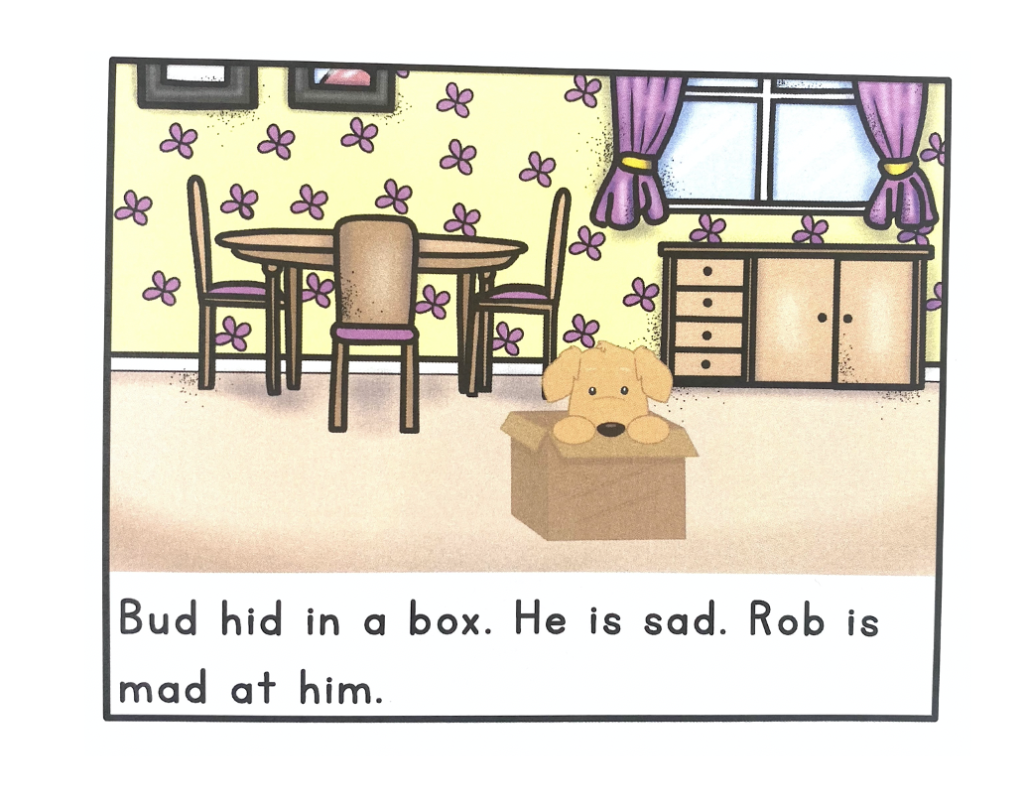Recently I’ve been asked about decodable books: When to use them, why use them, and for how long. This is a hot button issue for many educators! Today I’m going to break down my understanding of both sides, along with my own opinion that has evolved over time.
I am supportive of using decodable books for beginning and struggling readers. At the same time, students need to be exposed to rich literature through read-alouds from the beginning. Decodable books are a piece of the pie. It may be a larger piece for certain kids at certain times, but it should never be all that they are eating. (Is that metaphor too strange? Ha!) I believe decodable books serve a purpose for many of our students.
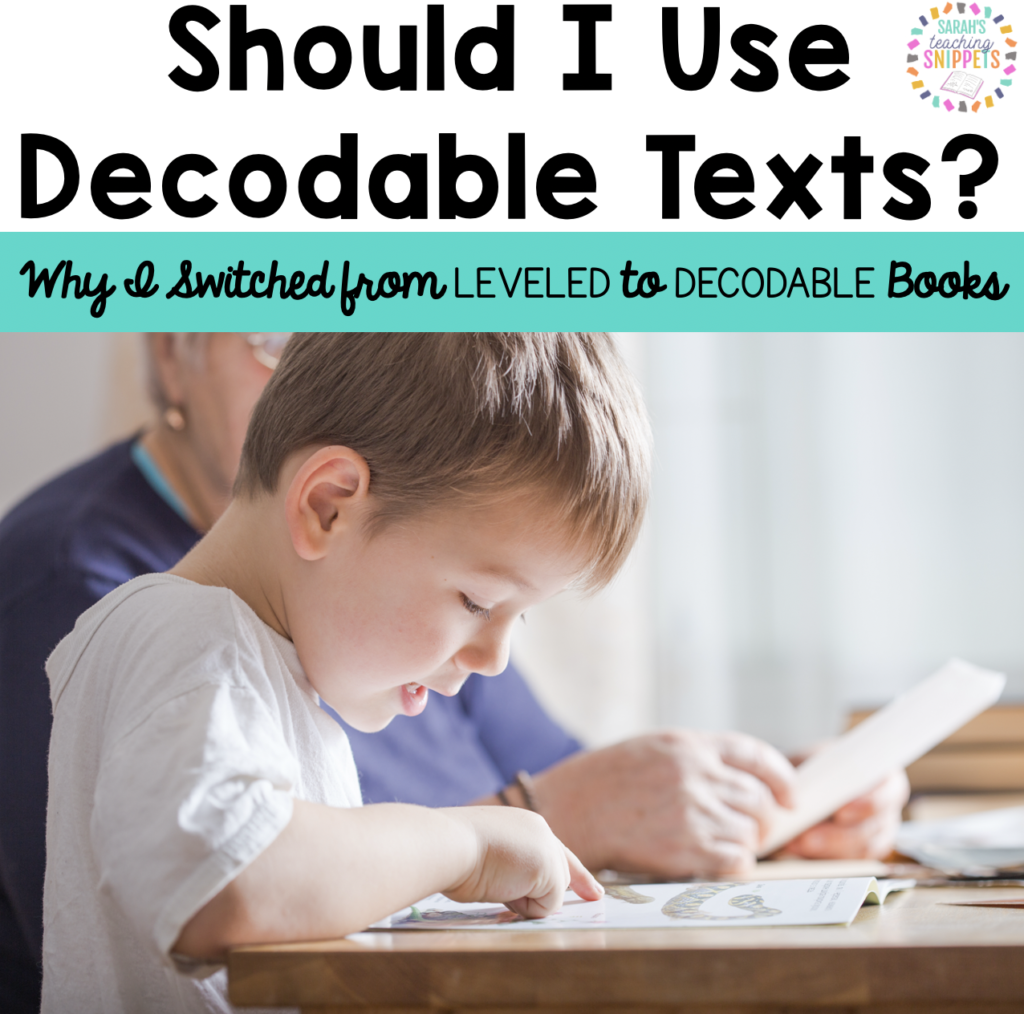
What are Decodable Books?
Decodable books are books that have only the phonetic elements that the student has already learned. They are also called phonetically-controlled texts. For example, if a student has learned the primary sounds for all consonants and the short vowel sounds, then they would read a decodable book that uses mainly CVC words (cat, run, bat, hot, etc.) There may be a few high-frequency words mixed in too (are, was, she, he, the, etc.)
This requires some sort of phonics scope and sequence that shows you where you’re going and where you’ve been. For example, by the time my students are learning the silent e (VCe pattern), they have also been taught and practiced words with short vowels, digraphs (sh, ch, th), and consonant blends. Therefore, my decodable books could include words with those attributes. Since my focus is silent e, I would want to choose a text that had more silent e words. I would not want a text that included vowel teams or bossy r because I have not taught that yet.
Decodable books make random guessing difficult because there are visually similar words and a sentence structure that isn’t necessarily predictable. This is a good thing! Students are required to use their sound-symbol knowledge and phonemic awareness to sound out and blend words. Numerous studies have proven that phonics instruction is essential for reading instruction. Click here to read about how the brain reads.
Why Use Decodable Texts?
When reading decodable books, students can use their phonics knowledge to decode unknown words. Since the book is full of words using only the phonetic elements that they have been taught, students can be successful. This may lead to confidence, which hopefully will lead to more reading. Repeated reading of decodable books can help a student develop word-level automaticity and accuracy, which is the first step toward fluency.
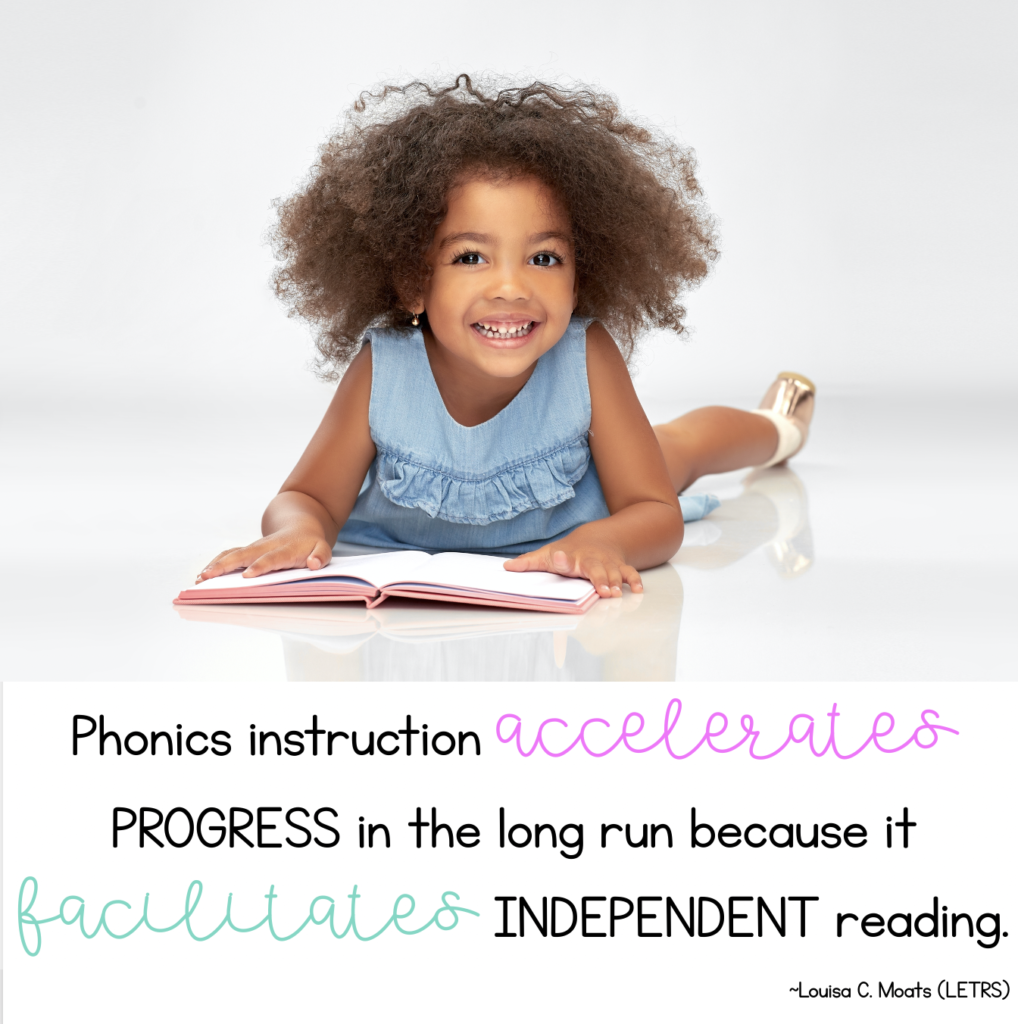
Benefits of decodable books:
- Beginning and struggling readers are more likely to successfully read the book, leading to more confidence.
- Students get to practice phonics skills they were just taught in context
- Repetition leads to automaticity and accuracy in word recognition
- They provide much-needed steady practice for struggling readers
The obvious downside that gives decodable books a bad name is that because they are controlled texts, they aren’t the most interesting books around. However, they are a means to an end! They are a stepping stone to get to those more interesting authentic texts.
But What About Comprehension?
Another argument against decodable readers is that the ultimate goal is comprehension and decodable books only promote sounding out words, not meaning. Comprehension is indeed our end goal. However, you need to be able to read the words to gain meaning from them! If a reader is spending all of their cognitive energy on decoding, there isn’t anything left for comprehension. On the flip side, when a reader becomes proficient at decoding they have more cognitive energy available for comprehension. Students need to be able to get those words off the page before they can apply meaning to them. Providing decodable readers early on will help them get there and open them up to reading more authentic, interesting books.
“Because systematic phonics instruction helps students learn to identify words, it increases their ability to comprehend what they read (Ryder, Tunmer, & Greaney, 2007), thereby enabling them to focus on the meaning of the text at hand.” (Louisa Moats)
When to Use Decodable Books?
Decodable books should be used in the earlier stages of literacy instruction. This will ensure that these students are getting the practice they need to solidify the phonics instruction they are getting. It will also help to minimize the adoption of bad habits, such as guessing and over-reliance on context and picture clues.
Decodable books are used while students are mastering “the code”. After that, it is best to transition to more authentic texts. After all, if you can read then all books are decodable, right?
Struggling readers, especially students with dyslexia, need access to decodable books longer than your typical reader. Students with dyslexia are working on rewiring their brains through systematic, explicit instruction with phonics. This takes time and patience. The last thing our students with dylsexia need is to develop bad reading habits that further hinder them. They need to be applying the phonics skills they are learning to increase automatic word recognition. According to research, teaching students to sound out words actually “sparks more optimal brain circuitry than instructing them to memorize the word.” (You can read more from this article HERE.)
What About Leveled Readers?
My original training involved teaching reading using leveled readers during guided reading. I was 100% team guided reading and all about the strategies and the cueing system. No boring decodable books for me, thank you very much. Ha! (Now I can’t even believe that I felt that way!) Even though I felt like there were issues, it took me a very long time to pry myself away from these leveled readers for our beginning and struggling readers because that was all I knew and that was what everyone seemed to doing. And if everyone is doing it, it must be right… Right? 😉
What are Leveled Readers?
Before I go any further, I should explain what leveled readers are. Leveled readers are part of a system that matches readers to books based on an oral reading assessment. Depending on which program you use, there is either an alphabetic or numeric leveling system. Each grade level has several levels within it. For example, a typical first grader reads at level C in the beginning and ends at level J (or if using the numeric system begins at level 3 and ends at level 16). Each level is based on certain criteria and is slightly more challenging than the previous level.
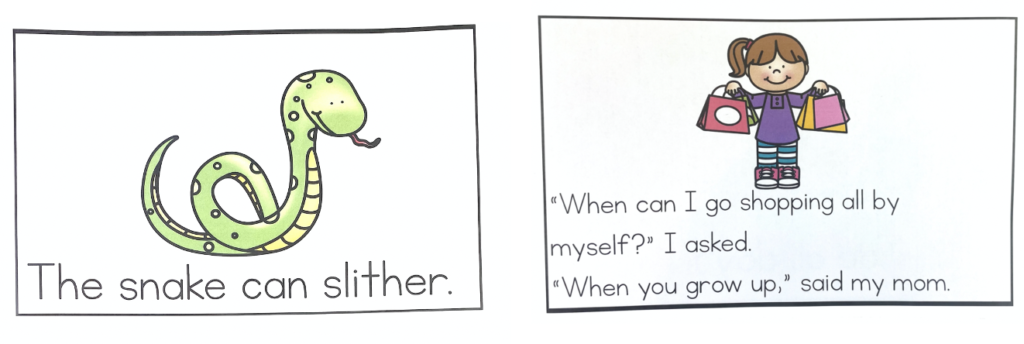
Clip art is by Whimsy Clips.
The purpose is to match a student’s reading abilities with the right level of a book so they get practice with a book that isn’t too hard or too easy. As reading abilities improve, students are given books at the next level which are slightly more complex. Each reader is matched more accurately with texts “at their level”, as opposed to the wide umbrella of their grade level. A positive is that these books are filled with rich vocabulary and interesting topics.
This all sounds pretty good, right? Well, it is okay for students who already have solid foundational skills. However, it can be problematic for some beginning readers and for all struggling readers.
An example of an early Leveled Reader Reader
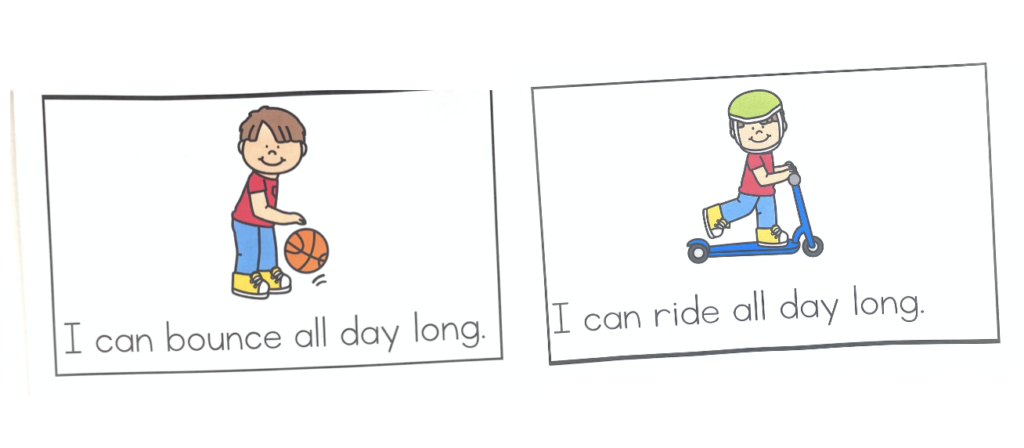
This is an example of what a kindergartener or beginning first grader may be asked to read. It would be considered about Level B. Keep in mind, that likely these same students are simultaneously working on sounding out 3 letter words with short vowels during their phonics instruction and have probably not learned silent e, vowel teams, <ce> representing the /s/ sound, or the -ong sound.
- The student would learn the pattern of the sentence.
- They would use the picture clue and the first letter of the word to figure out the word that differs from each page.
- Only the words “I” and “can” are words that the student at this point could actually decode.
- The rest are “read” by short-term memorization, repetition of a pattern, or guessing based on a picture.
- A teacher may say, “What would make sense?” or “Get your mouth ready” or “Skip and go back” as prompts to help them figure out the words “bounce” and “ride”.
The Problem with Leveled Readers
With leveled readers, beginning readers are taught to rely on the pattern of the sentence, picture clues, context, guessing, and often the first letter in the word. Leveled readers don’t provide practice with decoding. With leveled readers, students are taught to use a variety of strategies to figure out the words on the page. Notice I didn’t say decode. To be fair, “sounding out” is one of the strategies for reading leveled texts, but if you look at these leveled readers, you’ll see that there are not a lot of opportunities to “sound out” or decode words using phonetic elements that these kids have actually learned. In fact, advanced decoding skills are required for even the earliest leveled readers. This leads to more guessing and over-reliance on other cues.
In fact, the strategies that our students are taught to use are actually strategies that poor readers use (memorization, guessing, using context, and skipping words). Skilled readers can read words in isolation quickly and without effort. They don’t rely on context or guessing. It may appear that they are simply memorizing words, but in reality they have already mapped these words.
Leveled Readers suggest that if students “read” the sentence pattern with the same words over and over (just substituting a few words here and there), then that students will just memorize those words as a whole using their visual memory. The problem with this theory is that we don’t actually use our visual memory to learn new words. (Read more about this here.) Words are not learned in whole chunks using visual memory. This is a theory that has been disproven by numerous studies.
Another problem is that the levels really are, in many ways, arbitrary.
Should I Throw Out My Leveled Readers?
I no longer use the early levels for reading instruction with my beginning readers. I think they can do more harm than good for some of our students if they are the main source of instruction and practice for our beginning readers. Now, I use decodable texts for my beginning readers.
However, once students reach a certain point (they are proficient with decoding and have developed strong word recognition skills with several high-frequency words), I am not opposed to using leveled readers, but in a different way. I do not use the actual leveling system and do not use leveled readers for any type of assessment. When students have strong foundational skills, you can use leveled readers as just regular texts. (I’m not talking about levels A-F. Those I have gotten rid of completely.) The books can be used for fluency practice and to connect to content area learning. For example, readinga-z.com has leveled readers about the branches of government. I would totally use those books with my students if the text looks appropriate for my readers.
Some students may still need decodable texts longer than other students. Some students may benefit from decodable texts, while also having some success with other types of books. The key for me is making sure you get decodable texts in the hands of those beginning and struggling readers.
Where to find Decodables
There are more and more decodable books out there. There were many years when I couldn’t afford to buy any decodable books, so I would try to write my own for my students. Those have evolved and improved a bit over the years with the help of great clip art. Below are some of the resources I’ve created and some of my favorite real publishers who make decodable books.
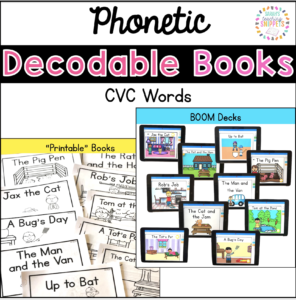
This bundle has ten phonetically controlled books. All of these are for beginning readers. They have mainly CVC words.
They come in “printable” format, digital Boom cards, and Google Slides. Each book is about 8-10 pages. The Boom Cards have the added bonus of the audio option.
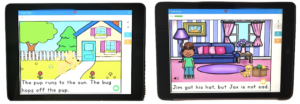
You can buy the books separately or save by getting the bundle. Click here to see these books.
Want to try one of these books out for FREE? Click here.
I also have decodable reading passages for several phonics skills. I have these for CVC words, digraphs, blends, silent e, and vowel teams.
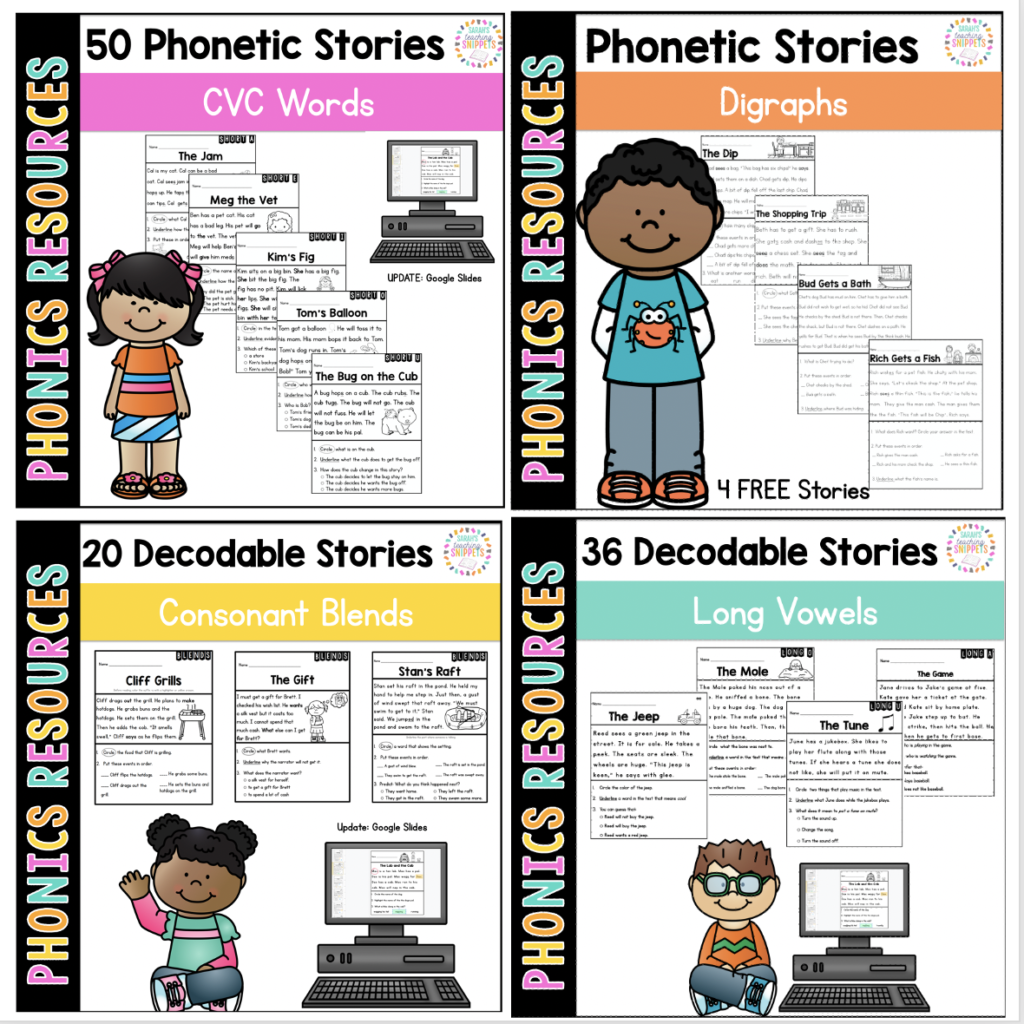
You can find those decodable passages here.
Decodable sentences are another way to practice phonics skills in context. This resource requires students to decode the words first, then they need to break the sentence up into its meaningful phrases. This is another step toward building fluency. I recently updated it with Google Slides. You can find these decodable sentences here.

Decodable Texts from Real Publishers
If you are able to buy from real publishers, you can ignore the resources you saw above! Ha! Take a look at the following recommendations instead.
PhonicBooks: These are high-interest decodable books and the illustrations are fantastic! They have a huge selection of decodable texts for all ages!
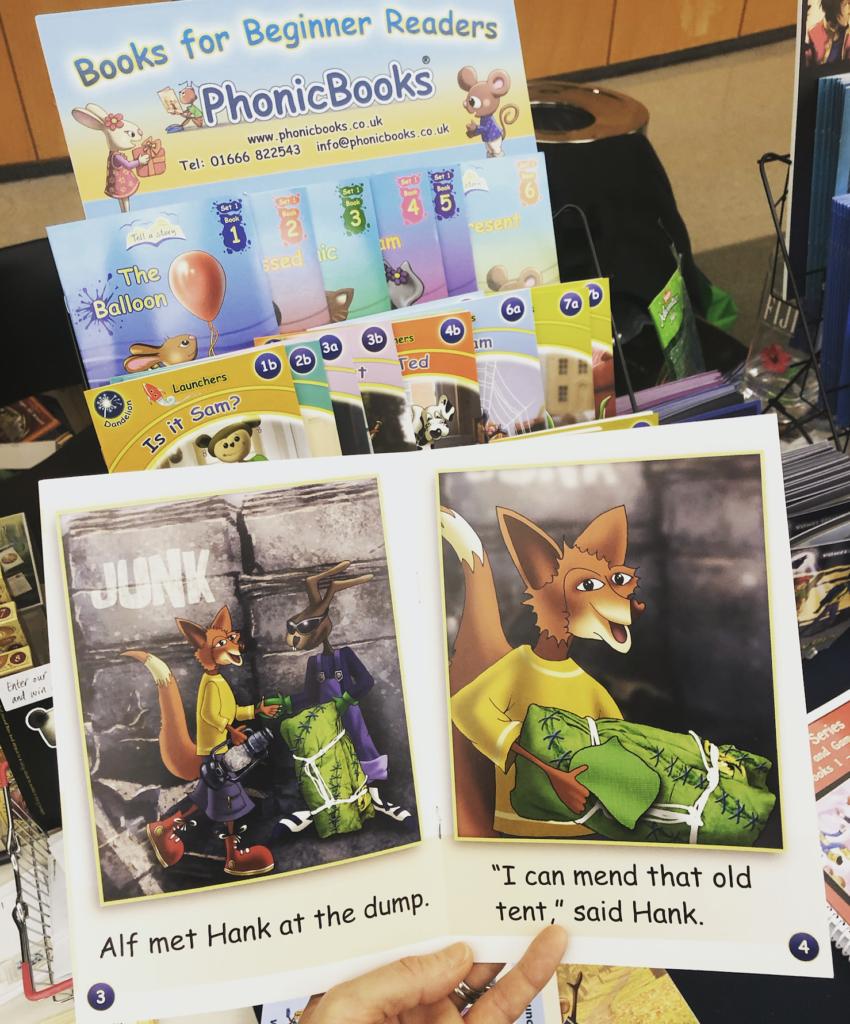
In addition to decodable books for early beginning readers, PhonicBooks also have several series of books for “catchup” readers. These are older, struggling readers who have a gap in their phonics knowledge and skills. Their decodable readers are age-appropriate and engaging. Go check out their website to see all of the fabulous options they have for older students!
PhonicBooks also has a series that you can download for FREE. Check it out here.
Charge Mommy Books are another favorite of mine! I have every book they’ve published so far and I love them! They are continually publishing new books and I’m obsessed. I highly recommend these!
Click here to learn more.
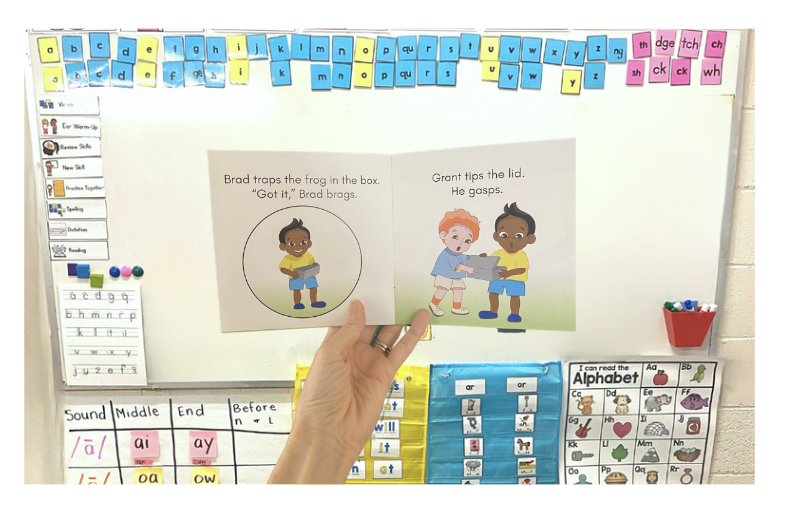
Just Right Readers: I only have a few of their books but I hope to get more! They have an enormous selection of books and they all look really good!
They also have a “take home” pack!
Click here to see their selection.
Ready Reader Decodables: I just found these and I really like them! They are highly decodable and they have a lot of books to choose from!
High Noon Books also has a series of “sound out chapter books”. My students love that a) they are reading chapter books and b) the text is larger and decodable so they can read it!
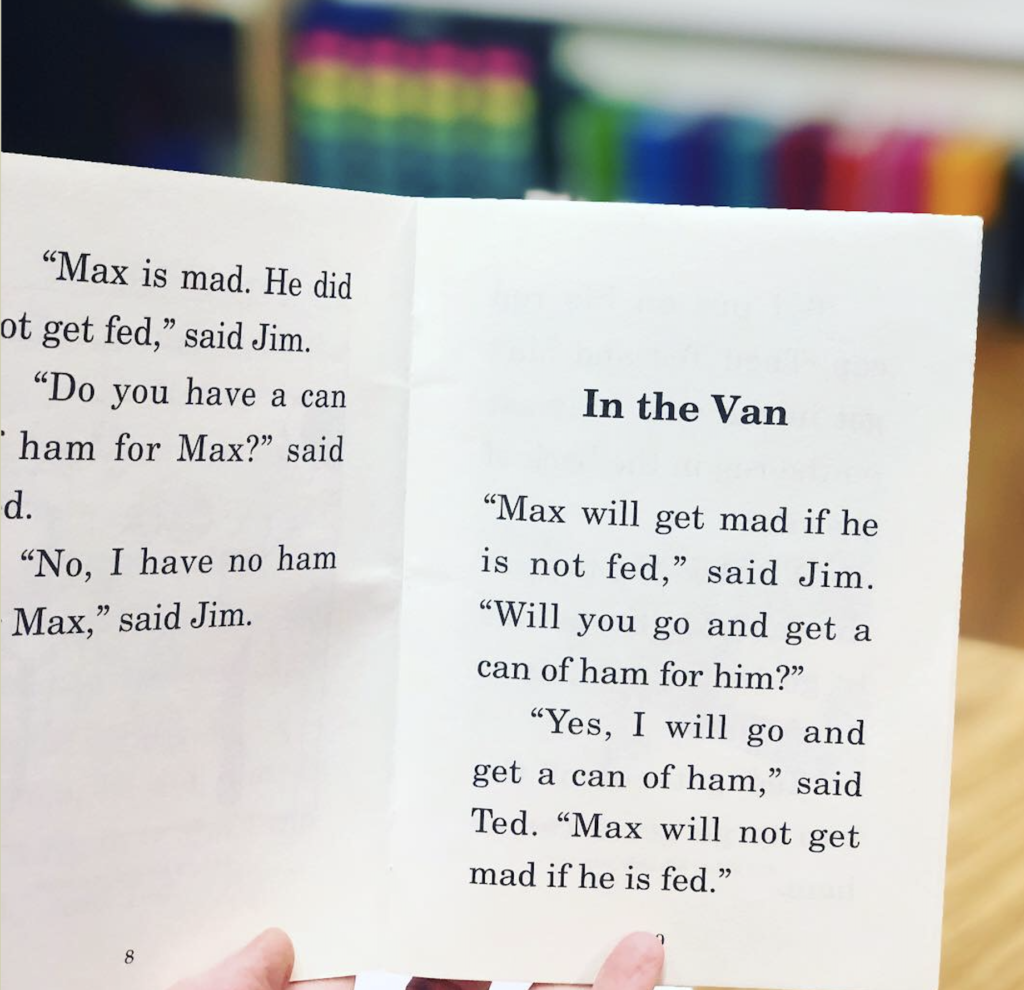
Another good place to find decodable chapter books is from Simple Words. Here is an example of one of their books:
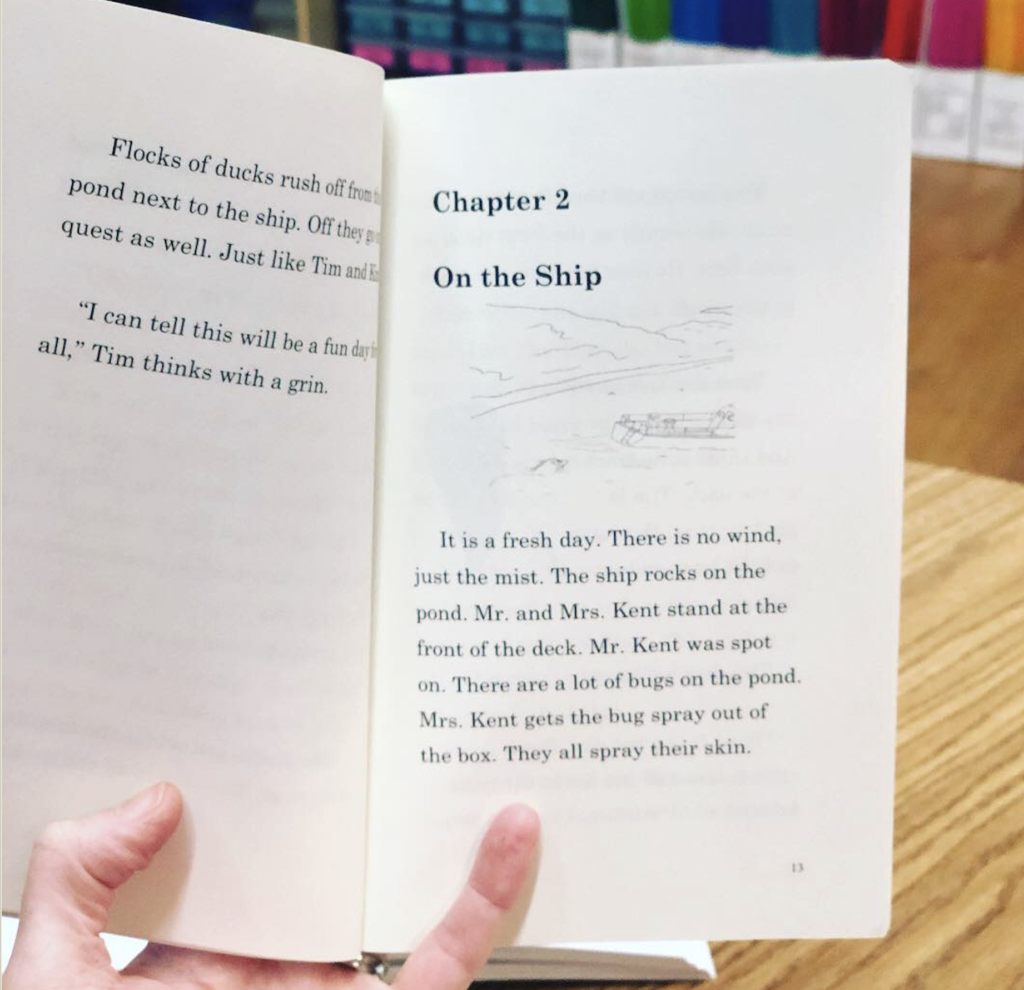
Flyleaf also has great decodable book sets. They have four sets of decodable readers.
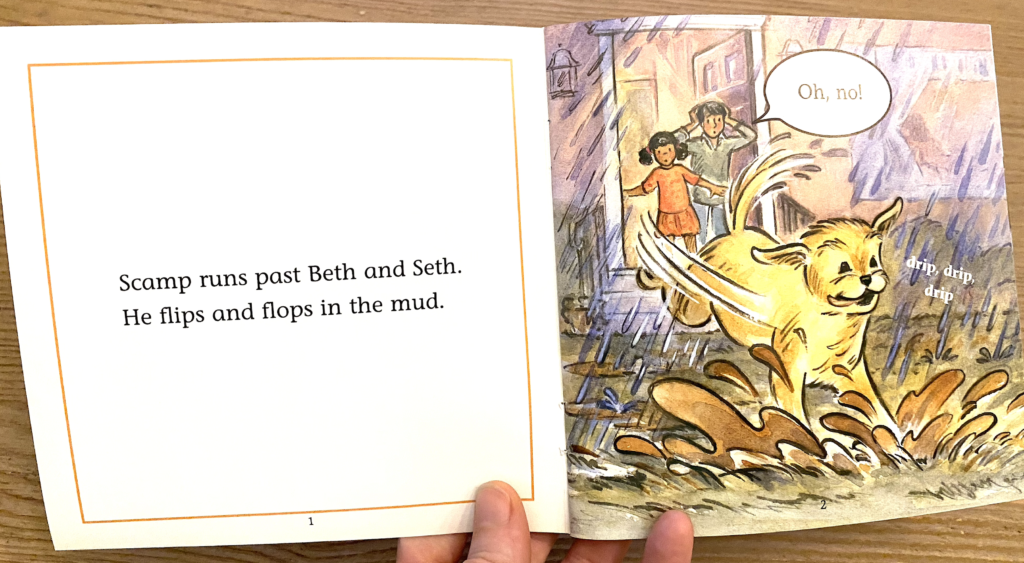
Another favorite resource is from Reading A-Z. These were the first decodable books that I started using. You get a lot of bang for your buck with this website!
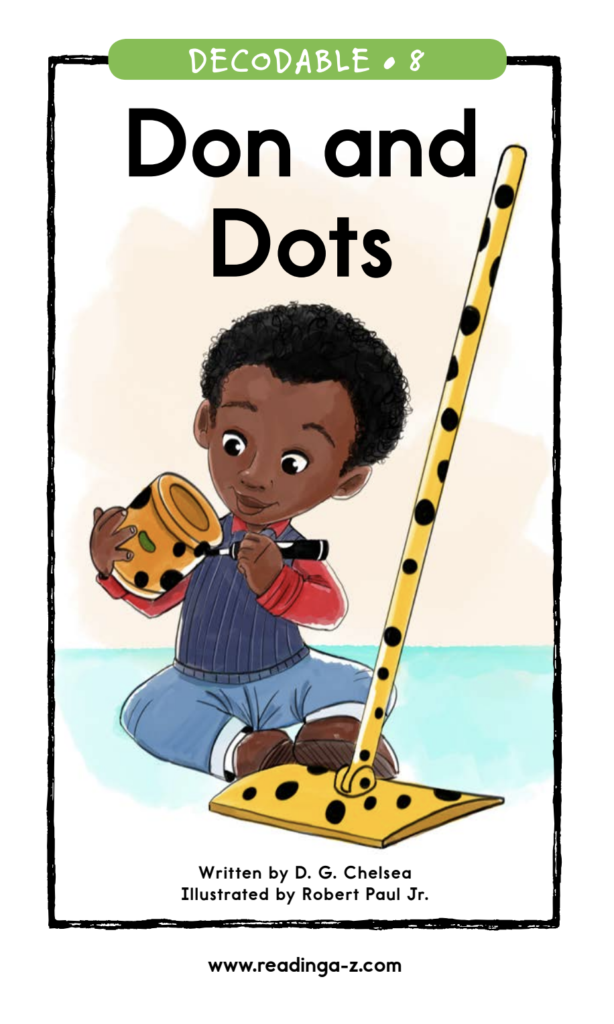
They have leveled readers but they also have great decodable readers! You pay an annual fee and then you can download any book on their website. There are TONS of books! You can find the decodable books with lesson plans here.
